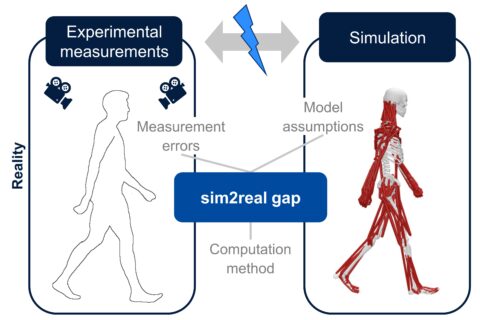Investigating deviations between experimental motion measurements and musculoskeletal simulation results

Musculoskeletal simulations can be used to estimate biomechanical variables based on non-invasive experimental motion measurement data. Due to measurement errors, model assumptions or the used computation method, there is a gap between reality (experimental measurements) and the simulations, the sim2real gap. However, to answer (patho-) physiological research questions, simulation results have to be accurate and reliable; the sim2real gap needs to be handled. In our latest publication, we investigated methods to handle the sim2real gap and published the results in a review paper.
The article in Frontiers in Bioengineering and Biotechnology is available as open-access at: https://doi.org/10.3389/fbioe.2024.1386874